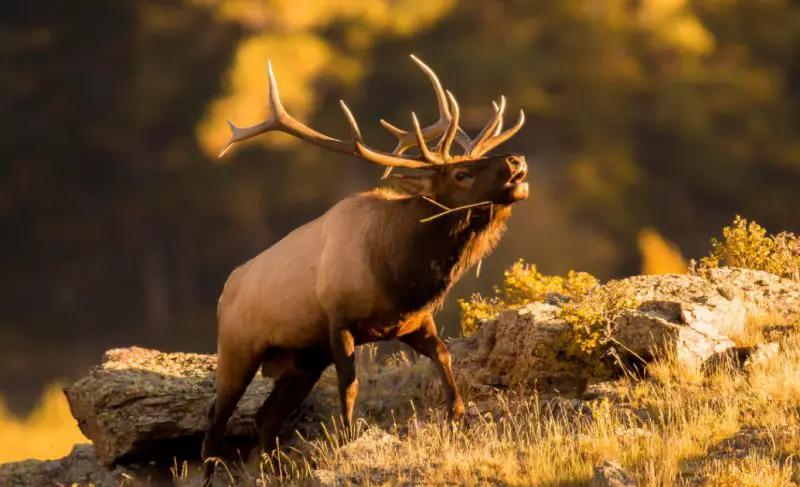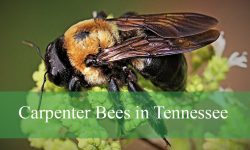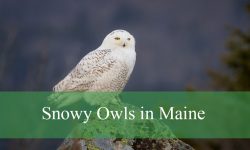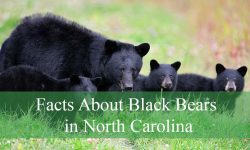Elk are one of the most iconic wildlife species roaming Montana’s sweeping valleys, rugged mountain slopes, and vast plains. Their presence defines the state’s wild identity, shaping ecosystems, influencing predator populations, and capturing the imagination of anyone who encounters them. Despite their popularity, elk remain surprisingly complex animals with behaviors, migrations, and ecological roles that many people rarely see.
Montana, with its diverse topography and seasonal extremes, supports one of the largest elk populations in North America. Yet the species that appears so familiar from roadside sightings or distant silhouettes often behaves in ways that defy expectations. From long-distance migrations to intricate mating strategies, elk reveal layers of biology and instinct that leave even experienced wildlife observers astonished.
This article explores ten fascinating scientific facts about elk in Montana, revealing hidden behaviors, surprising adaptations, and the ecological dynamics that make these animals so extraordinary.
1. Montana Elk Complete Some of the Longest Seasonal Migrations in North America

Elk Travel Through Diverse Terrain Across Multiple Ecosystems
Elk migrations in Montana take them from high alpine basins to river valleys and sagebrush flats. These journeys reflect an instinctive response to food availability, snow depth, and seasonal temperatures. In summer, elk move into high-elevation meadows where grasses and forbs provide rich forage.
When winter approaches, they descend into lower valleys to escape deep snow. This vertical migration can span dozens of miles each season, with some herds navigating routes passed down through generations. The complexity of these movements reveals how deeply elk behavior is tied to Montana’s seasonal rhythms.
Migration Helps Maintain Population Health
Long-distance movement prevents elk from overgrazing specific regions. By shifting habitats throughout the year, they promote regrowth of native vegetation and help distribute nutrients across the landscape.
Migratory behavior also regulates herd health. Moving through varied environments exposes elk to different food resources, reducing nutritional stress and supporting reproductive success.
These movements are essential for the maintenance of Montana’s large elk populations.
Challenges Threaten Traditional Migration Routes
Human development, fencing, and busy highways sometimes disrupt elk migration corridors. Such disruptions force elk to modify their routes, sometimes resulting in increased energy use or heightened risk of vehicle collisions.
Despite these challenges, many herds continue following ancient paths thanks to instinct and learned behaviors passed from cow to calf.
Montana’s conservation programs aim to protect these corridors to ensure long-term herd stability.
2. Elk in Montana Produce Astonishing Vocalizations During the Rut
Bull Elk Bugles Serve Multiple Purposes
During mating season, bull elk produce the iconic bugle—a high-pitched call that echoes through forests and valleys. Although often associated with aggression, the bugle functions as a multi-layered communication tool.
It signals strength to rival bulls, attracts potential mates, and warns younger males to keep their distance. The unmatched resonance of a bull’s bugle can travel remarkable distances under ideal atmospheric conditions.
Vocalization Indicates Health and Fitness
The ability to produce long, powerful bugles reflects a bull’s physical condition. Stronger animals can maintain calls for longer periods without fatigue. Cows often select mates based on vocal strength, as it can indicate good genetics and successful survival traits.
This selection process contributes to healthy herd genetics across Montana’s elk populations.
Bugling Behavior Intensifies in Certain Habitats
Bugling resonates particularly well in open valleys and canyon systems. As a result, elk in regions like the Madison Range or Yellowstone borderlands display especially intense vocal activity.
The acoustic response from the landscape enhances communication, shaping how elk interact during the rut.
3. Elk Have Complex Social Structures Led by Dominant Matriarchs
Cow Elk Form Stable Herds Throughout the Year
Cow elk and their calves typically remain in cohesive groups led by older, experienced females. These matriarchs guide the herd, choosing migration timing, feeding areas, and safe bedding sites.
Such leadership is crucial for survival, especially during harsh Montana winters when timing can determine nutritional success.
Bulls Remain Solitary Except During Rut
Outside mating season, bulls generally separate from cow herds and form bachelor groups. These smaller groups allow males to conserve energy and avoid unnecessary conflict.
Bull groups seldom interact with cow-calf herds until mating season approaches.
Social Learning Ensures Survival Skills
Calves learn migration routes, predator-avoidance strategies, and feeding patterns by observing their mothers. This cultural transmission shapes herd behavior across generations.
Understanding these dynamics emphasizes the importance of maintaining stable female-led herds.
4. Elk Shape Montana’s Ecosystems Through Heavy Browsing
Elk Influence Forest Composition
Elk feed on a wide variety of vegetation, including shrubs, grasses, bark, and young saplings. Their browsing patterns shape forest structure by reducing understory density and influencing which plants dominate certain areas.
In river valleys, elk browsing affects willow and aspen regeneration, which in turn impacts beavers, birds, and small mammals.
This cascading ecological effect demonstrates elk’s importance as ecosystem engineers.
Over-Browsing Can Impact Regeneration
When elk populations become too dense or predators decline, over-browsing may occur. This reduces young tree growth and alters vegetation patterns, especially in riparian zones.
Wildlife managers monitor browsing intensity to maintain ecological balance.
Predators Help Regulate Elk Browsing
Wolves and mountain lions contribute to balancing elk populations. Their presence encourages elk to move more frequently, preventing prolonged grazing in sensitive areas.
Predator-prey dynamics help maintain Montana’s diverse plant communities.
5. Elk Calves Possess High Survival Instincts From Birth
Camouflage Helps Protect Newborns
Elk calves are born with white spots that break up their outline, helping them blend with ground vegetation. This camouflage is crucial during the first weeks of life when calves cannot outrun predators.
Cows hide their calves in tall grasses and return periodically to nurse, reducing scent trails that attract predators.
Calves Can Run Within Hours
Unlike many mammals, elk calves stand within minutes of birth and run within hours. This rapid mobility helps them evade predators and quickly integrate into the herd.
Speed becomes a primary survival tool during the calf’s first year.
Maternal Behavior Is Highly Protective
Cow elk aggressively defend their calves, often confronting predators such as coyotes or wolves. Their defensive displays include kicking, charging, and vocalizing to warn the herd.
This maternal vigilance significantly improves calf survival rates in Montana.
6. Elk Have Specialized Digestive Systems That Allow Diverse Diets
Multi-Chambered Stomachs Break Down Tough Vegetation
Elk possess a ruminant digestive system consisting of four chambers. This design allows them to process fibrous plant materials that many other animals cannot digest.
By fermenting tough vegetation, elk gain energy from winter food sources like dried grasses and shrub twigs.
Seasonal Diet Shifts Reflect Food Availability
In summer, elk feed on lush grasses and forbs rich in protein. During fall, they consume more shrubs and woody plants as green vegetation disappears.
Winter diets shift again toward hardy shrubs and bark, sustaining elk through Montana’s snow-covered months.
Digestion Efficiency Shapes Movement Patterns
The need to find digestible winter forage influences elk migration. Areas with lighter snow cover allow access to buried vegetation, guiding elk toward suitable habitats.
This link between digestion and movement reinforces the importance of Montana’s winter ranges.
7. Elk Antlers Grow at Remarkable Speeds
Antlers Are One of the Fastest-Growing Tissues in the Animal Kingdom
Bull elk begin growing antlers in spring, and within a few months, they reach impressive sizes. Antler growth is fueled by hormones and nutrient-rich forage.
Velvet—a soft layer of skin filled with blood vessels—covers antlers during development. Once growth completes, bulls shed velvet by rubbing against trees.
Antler Size Reflects Diet and Health
Nutrient availability heavily influences antler size. Montana’s rich summer forage supports robust antler growth, especially in regions with high-quality grasses and minerals.
Large antlers often signal genetic strength and reproductive fitness.
Antlers Serve as Weapons and Displays
During the rut, bulls use their antlers to spar with rivals. These battles establish dominance and determine access to breeding opportunities.
Antler size and symmetry play a major role in mating success.
8. Elk Actively Modify Their Habits to Avoid Predators
Wolves Influence Elk Movements Across Montana
The presence of wolves prompts elk to remain alert and mobile. Elk in wolf-dense regions show increased vigilance and altered grazing patterns to reduce predation risk.
These behavioral adjustments affect where herds choose to feed, bed, or migrate.
Mountain Lions Target Isolated Elk
Mountain lions rely on stealth rather than group hunting. They often prey on solitary elk, especially those in steep, forested areas.
This predation risk shapes habitat use among elk, particularly during winter.
Elk Adjust Group Size Based on Threats
In high-predator zones, elk form larger herds to increase safety through collective vigilance. In low-risk areas, they spread out more widely to maximize foraging efficiency.
Such adaptive behavior helps elk survive changing predator densities.
9. Elk Influence Montana’s Economy, Hunting Culture, and Conservation Efforts
Hunting Supports Wildlife Conservation
Montana’s elk hunting season contributes significantly to conservation funding. License fees support habitat restoration, research, and wildlife management programs.
Responsible hunting helps maintain balanced elk populations and reduces over-browsing.
Elk Watching Boosts Ecotourism
Elk-rich regions attract tourists year-round. Fall rut viewing and winter migrations bring photographers, wildlife enthusiasts, and biologists to areas like the Paradise Valley.
Ecotourism supports rural communities and raises awareness of the need for habitat protection.
Ranching, Wildlife, and Land Use Interact Closely
Elk often share grazing areas with livestock. While this can create competition for forage, collaborative management practices help maintain harmony between ranching and wildlife needs.
Montana’s conservation efforts emphasize cooperation among stakeholders.
10. Elk Have Strong Cultural and Historical Significance in Montana
Indigenous Tribes Held Elk in High Spiritual Regard
Elk appear in the traditions, stories, and ceremonies of several Native American tribes, including the Salish, Kootenai, and Blackfeet. Their strength and resilience symbolize leadership and abundance.
Elk played key roles in subsistence, providing meat, hides, and tools.
Early Settlers Relied on Elk for Survival
Frontier families depended on elk for food, clothing, and crafting materials. Hunting traditions grew from these early survival practices, shaping Montana’s cultural identity.
Modern conservation efforts aim to ensure elk populations remain stable for future generations.
Elk Continue to Define Montana’s Wild Landscape
Today, elk remain central to Montana’s sense of wilderness. Their presence connects residents and visitors to the natural heritage of the state.
Their migrations, calls, and interactions contribute to the living tapestry of Montana’s ecosystems.
FAQs About Elk in Montana
How many elk live in Montana?
Montana supports one of the largest elk populations in the U.S., numbering over 130,000 animals.
When is the best time to see elk in Montana?
Fall is ideal for viewing bugling bulls, while winter offers opportunities to see large herds in valleys.
Do elk migrate long distances?
Yes. Some herds migrate dozens of miles between summer and winter ranges.
What predators hunt elk in Montana?
Wolves, mountain lions, coyotes, and occasionally bears prey on elk.
Are elk dangerous?
Elk are generally cautious but can be aggressive during rut or calving season.
How big do Montana elk get?
Bulls can exceed 700 pounds, while cows typically weigh between 400 and 500 pounds.
Do elk damage forests?
Over-browsing can impact certain plant communities, but managed populations maintain balance.
Are antlers reused after shedding?
No. Antlers fall off each winter and regrow the following season.
Conclusion
Elk in Montana are far more than majestic animals roaming scenic landscapes—they are complex, adaptive, ecologically vital creatures whose behaviors continue to surprise scientists and wildlife enthusiasts alike. Their migrations shape ecosystems, their vocalizations define autumn valleys, and their social structures reveal sophisticated communication and survival strategies.
Understanding these ten surprising facts highlights the depth of their natural history and the importance of conserving the landscapes they depend on. As Montana’s environment continues to evolve, ensuring the protection of elk habitats and migration corridors remains essential for maintaining one of the most iconic wildlife species in North America.






